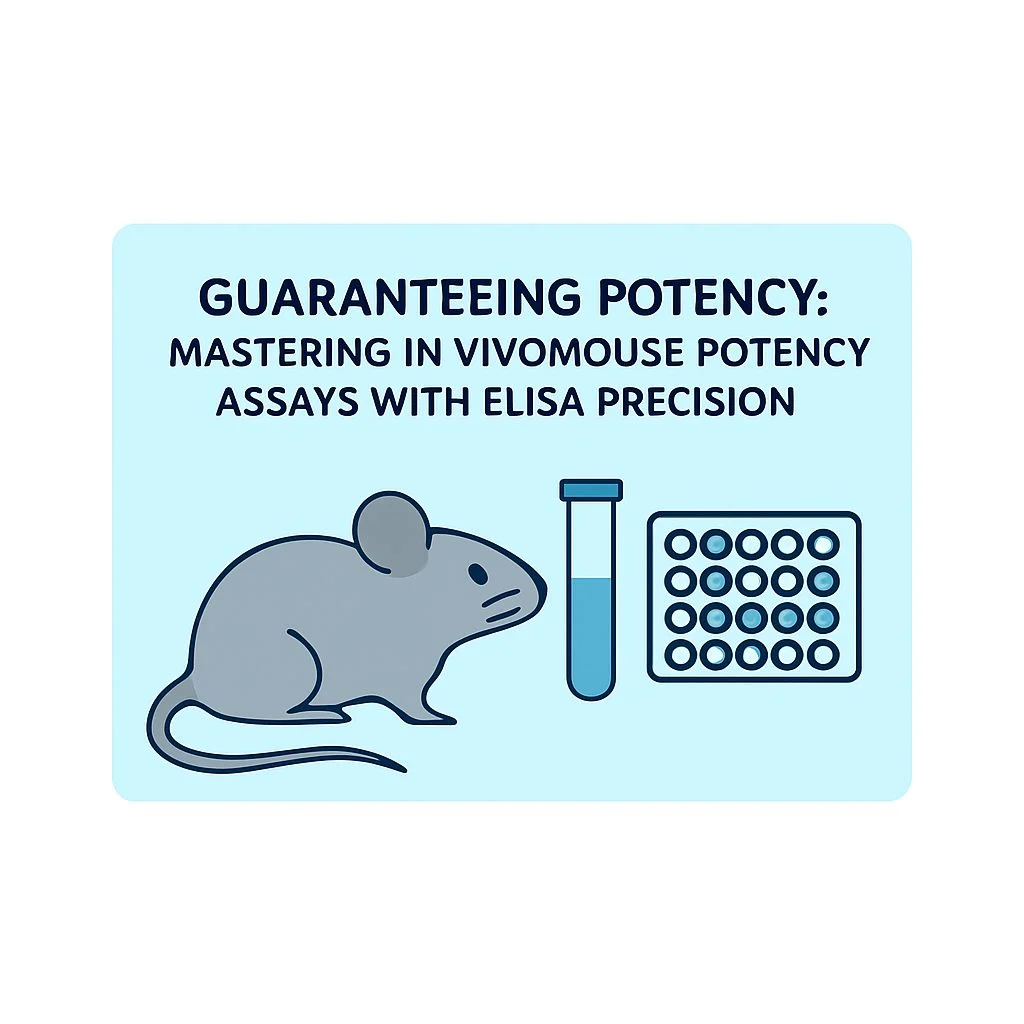Is the efficacy of your biologic product truly consistent?
In biologics quality control—covering vaccines, antitoxins, monoclonal antibodies, and gene therapy products—the potency assay is a critical measure of biological activity. A well-designed and validated in vivo potency assay, complemented by a sensitive ELISA-based analytical system, forms the scientific foundation for demonstrating product efficacy, ensuring batch-to-batch consistency, and maintaining regulatory compliance.
At Amaran Biotech, we understand the technical and biological challenges of developing robust mouse potency assays. Below are the three essential pillars for establishing a reliable potency evaluation framework—integrating ELISA analytics for quantitative precision and reproducibility.
I. 🎯 Define the Objective — Know the Purpose of Your Assay
A clear objective ensures your potency assay delivers meaningful and interpretable results. Your design strategy—and whether to include ELISA readouts—depends on the assay’s intended use:
Batch Release Testing: Quantitative ELISA results can support potency confirmation by correlating antigen concentration with in vivo response.
Stability Studies: ELISA enables sensitive detection of potency decline or antigen degradation across shelf life.
Comparability Assessments: ELISA provides objective analytical data to demonstrate product equivalence after process or formulation changes.
Research or Screening: Rapid ELISA screening can prequalify candidates before in vivo efficacy confirmation, reducing animal use and development cost.
II. 💎 Establish the Benchmark — Reference Standards and ELISA Calibration
A reliable Reference Standard ensures assay accuracy, while ELISA quantification supports its consistent application.
Characteristics: Your standard should be well-characterized, stable, and fully traceable to a known potency value.
Application: Express potency relative to the reference standard, using ELISA results to validate concentration-response relationships.
Maintenance: Periodic ELISA-based verification helps confirm the reference material retains its biological activity over time.
III. ✅ Validate with Rigor — Demonstrate Method Suitability
Validation confirms your assay—both in vivo and ELISA components—is fit for its intended purpose.
Integration: Use ELISA to measure antibody titers, antigen content, or immune response markers that support the in vivo potency endpoint.
Goal: Confirm both assay arms produce consistent, reproducible, and scientifically correlated results.
Outcome: A validated dual system (in vivo + ELISA) strengthens confidence in potency results and simplifies regulatory review.
🚧 Overcoming the Challenges of In Vivo Potency Testing
Controlling High Variability
Challenge: Biological variability among animals often increases data spread.
Solution: Incorporate ELISA as a quantitative secondary endpoint to normalize variability and reinforce statistical robustness.
Ensuring Reagent Stability and Consistency
Challenge: Reagent potency (e.g., challenge strain virulence or antitoxin activity) can shift over time.
Solution: Employ ELISA to routinely assess reagent stability, ensuring potency data remains traceable and comparable.
👉 Combining in vivo assessment with ELISA analytics transforms traditional potency testing into a more quantitative, reproducible, and ethically optimized system for modern biology.
💡 Elevate Your Quality System with ELISA-Enhanced Potency Assays
A scientifically robust potency assay—strengthened by ELISA quantification—provides undeniable evidence of biological efficacy and manufacturing control. Integrate ELISA precision into your potency strategy and set a new benchmark for biologic quality assurance.
